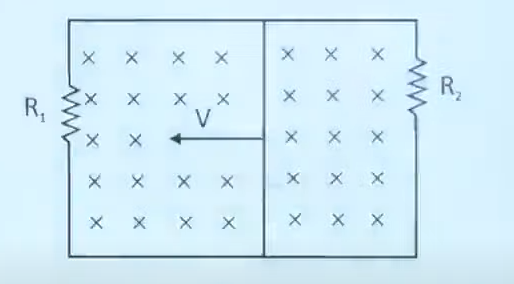In a galvenic cell the direction of current is:
anode to cathode
cathode to anode
Zn rod to Cu rod
Depend on concentration of ZnSO_(4) and CuSO_(4)
The correct Answer is:B
To determine the direction of current in a galvanic cell, we can follow these steps:
Step 1: Understand the Components of a Galvanic Cell
A galvanic cell consists of two electrodes: the anode and the cathode. The anode is where oxidation occurs, and the cathode is where reduction takes place.
Hint: Remember that oxidation is the loss of electrons, while reduction is the gain of electrons.
Step 2: Identify the Flow of Electrons
In a galvanic cell, electrons flow from the anode to the cathode. This is because the anode, where oxidation occurs, releases electrons that travel through the external circuit to the cathode.
Hint: Electrons move from negative to positive, which means they flow from the anode (negative) to the cathode (positive).
Step 3: Determine the Direction of Current
By convention, the direction of electric current is defined as the direction of positive charge flow. Since electrons are negatively charged and flow from the anode to the cathode, the current flows in the opposite direction—from the cathode to the anode.
Hint: Current is defined as the flow of positive charge, which is opposite to the flow of electrons.
Step 4: Conclusion
Therefore, in a galvanic cell, the direction of current is from the anode to the cathode.
Final Answer: The direction of current in a galvanic cell is from anode to cathode.
---
A galvanic cell consists of two electrodes: the anode and the cathode. The anode is where oxidation occurs, and the cathode is where reduction takes place.
In a galvanic cell, electrons flow from the anode to the cathode. This is because the anode, where oxidation occurs, releases electrons that travel through the external circuit to the cathode.
By convention, the direction of electric current is defined as the direction of positive charge flow. Since electrons are negatively charged and flow from the anode to the cathode, the current flows in the opposite direction—from the cathode to the anode.
Therefore, in a galvanic cell, the direction of current is from the anode to the cathode.
Topper's Solved these Questions
- BOOK - CBSE COMPLEMENTARY MATERIALCHAPTER - ELECTROCHEMISTRY EXERCISE - Fill in the blanks type question:4videos
ELECTROCHEMISTRY
- BOOK - CBSE COMPLEMENTARY MATERIALCHAPTER - ELECTROCHEMISTRY EXERCISE - Assertion-Reason type2videos
ELECTROCHEMISTRY
- BOOK - CBSE COMPLEMENTARY MATERIALCHAPTER - COORDINATION COMPOUNDSEXERCISE - LONG ANSWER TYPE QUESTIONS3videos
COORDINATION COMPOUNDS
- BOOK - CBSE COMPLEMENTARY MATERIALCHAPTER - GENERAL PRINCIPLES AND PROCESSES OF ISOLATION OF ELEMENTSEXERCISE - Short Answer-II Type Questions5videos
GENERAL PRINCIPLES AND PROCESSES OF ISOLATION OF ELEMENTS
Similar Questions
The magnetic field associated with a current-carrrying conductor is in anticlockwise direction. If the conductor was held along the east-west direction, what will be the direction of current through it ? Name and state the rule applied to determine the direction of current ?
View SolutionStudy the following principle and answer the question.
A force is excreted on a current-carrying conductor placed in a magnetic field. The direction of this force depends on both the direction of the current and the direction of the magnetic field. This force is maximum when the direction of the current is perpendicular to the direction of the getic field.
Draw a diagram representing the construction of this equipment.View Solution
Knowledge Check
- Question 1 - Select One
Find direction of current.
 Aclockwise in bothBanticlockwise in bothCanticlockwise and clockwiseDclockwise and anticlockwise
Aclockwise in bothBanticlockwise in bothCanticlockwise and clockwiseDclockwise and anticlockwise - Question 2 - Select One
The direction of current in a cell is
A(−) ve pole to (+) ve pole during deschargingB(+) ve pole to (−) ve pole during dischargingCAlways (−) ve pole to (+) ve poleDalways flows (+) ve pole to (−) ve pole - Question 3 - Select One
The direction of current in a wire is
Athe same as the direction of the flow of electrons through the wireBopposite to the direction of flow of the electrons through the wireCthe same as the direction of flow of the newtrons through the wireDopposite to the direction of flow of neutrons through the wire
Direction of current changes in
View SolutionDirection of current changes in
View SolutionConventionally, the direction of the current is taken as
View SolutionA commutator changes the direction of current in the coil of
View SolutionA commutator changes the direction of current in the coil of
View Solution

